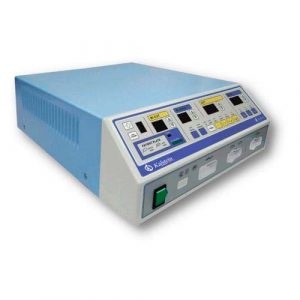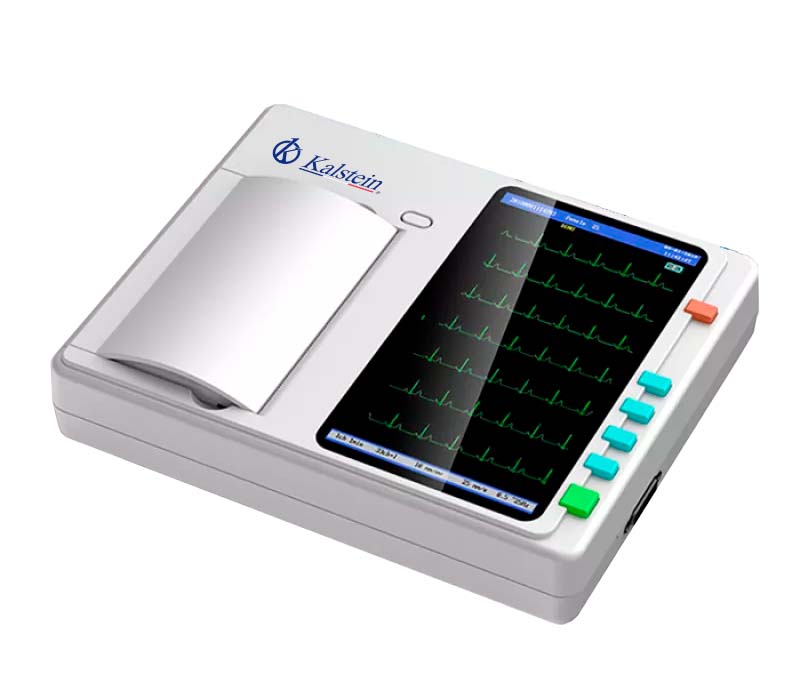The use of electrosurgery is one of the tools that combines experience and craftsmanship with the art of medicine. Just as a carpenter uses the right tool for the right purpose and job, those engaged in the discipline of healing should choose the right tool for the intended purpose.
Electrofulguration and electrodesiccation are single-line electrosurgical procedures that carbonize and destroy surface tissue using high-voltage, low-amperage, and high-attenuation currents. High voltage is required to maintain current because current flowing from the treatment electrodes does not return to the generator.
Low and dull currents cause more tissue clotting than amputation, allowing normal tissue destruction. In electrodesiccation, the tissues become dehydrated by direct contact with the electrode. In electrofulguration, a 1- to 2-mm probe electrode is passed over the skin and sparks are produced in the skin to ablate surface tissue. Thus, fulguration is characterized by:
- During fulguration, the active electrode is held at a small distance from tissue.
- Sparks pass over the fabric.
- Only one active electrode is used.
- The patient himself serves as a counter electrode through his grounding.
- High voltage and low current are used.
- Limited superficial burn occurs.
When should fulguration be used?
Suitable for surface tissue destruction. Low-power electrotherapy units are used to treat benign superficial neoplasms such as seborrheic keratosis and wart. Dermatologists typically use curettage and electrodesiccation to treat benign and superficial malignant skin tumors. The tumor is first removed with curettage of the skin, followed by electrofulguration or electrodesiccation at the site of the tumor.
For benign superficial neoplasms, such as seborrheic keratoses and melanocytic papulosis, low-power electrofulguration or desiccation can be done. Low potency is usually preferred because there is less risk of excessive tissue damage, resulting in pigment changes, scarring, wound infection, and delayed healing.
These methods liquefy the epidermis and papillary dermis, making it soft. Liquefied areas can be easily removed with a curet or gauze pad after coagulation; if done correctly, drying and curettage can prevent damage to the reticular dermis and consequent scarring. This procedure is repeated until all residual epidermal lesions have been removed.
What are the indications for this technique?
The choice of type of electrosurgery to use depends on the clinical situation. If only the epidermis is to be treated, electrode ablation is adequate and leaves virtually no scarring. Electrotherapy damages the most superficial tissues by drying out the skin to be treated. A high voltage current passes through a single terminal, producing a very damped current.
When the surgeon pulls the electrode slightly away from the skin, sparks form between the skin and the electrode. This is called electrofulguration. This method also results in very shallow degradation because surface carbonization isolates the underlying tissue from heat diffusion. Both techniques are widely used by dermatologists.
In dermatology, acrodermatism, actinic keratoses, small hemangiomas, epidermal nevus, seborrheic keratoses, flat warts, and hemostasis with capillary hemorrhage are common indications for electrotherapy and electrode curettage in epidermectomy.
Application of the fulguration technique with a Kalstein electrosurgical generator
For the application of this technique requires a reliable team, which controls the amount of current supplied for the electrosurgical process. The generators developed by the manufacturer Kalstein fully meet this requirement; for all technical specifications, please check the link HERE




